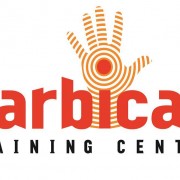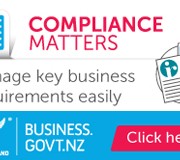As the clock ticks ever closer to the 4th April 2016, we should all be preparing our farm business models, and educating ourselves and our staff as to how each workplace will meet compliance with the recently passed new Health & Safety law – The Health & Safety at Work Act.
Across the whole rural industry each individual (from governance to the casual worker), business, organisation, association and industry within our industry is being challenged by how it will work simply, effectively, be able to maintain compliance without the myriad of paperwork that could break the time bank. There is also fear out there of the possibility of ‘missing’ that critical compliance measure that could leave the business exposed to undesired risk should an accident occur. The newly appointed legal obligation to manage the risks within the farm workplace control for all contractors and staff is a worry for many. That the application of legal duties has now also been expanded to include any person who holds a governance position in a business like a partner, trustee or director. In most farm businesses that will mean husbands and wives and farmers’ family members, as well as farm owners.
Governance & boards seek confirmation from the OnFarmSafety New Zealand team that their farm systems are being well managed in this Health & Safety space, and yet often what we find is that managers and staff have not had clear support and guidance from the business owners as to expectations regarding rules, responsibilities, liabilities, reporting and very rarely get comprehensive feedback. Often governance lack the required knowledge to develop the policy. Being deemed competent is also proving a challenge as we are working in a predominantly self-taught industry. Does that mean we all have to be certified and in what?
As a business we are inundated with calls as to how to, what’s compliance, and where to go to for good farm focused health & safety advice. Hence our business model’s core focus is on farm with the farmer owners and their teams taking the time to listen, assist, educate and counsel. Our comprehensive Australian / New Zealand standardised audits establish not only the compliance status, but the start of the business action plan and an enormous amount of education is part of every farm visit. Our paper based and online systems mirror the client’s needs for not only their farm activity but also that of their service providers – shearers, fencers, agricultural air provider, bulk spreader, vet etc. What we are seeing out there is that if there is a system in place, often it is a generic waste of time and money and there is no management understanding as to application. Our advice would be to be very careful as to the off-the shelf quick fix options being pushed out there at your expense.
It takes time to get these Health & Safety systems right. Don’t take shortcuts and expect a few signs and a sign in book to suffice. We need industry leadership and participation to develop rural industry standards starting with what practical good practice looks like, and consulting with associations, and then regulation. The regulator is waiting for our industry to take the lead. There is some really good material and supporting safety management tips within the codes, acts, and guidelines available – it just takes time to analyse what’s relevant and required by your farm business. That’s what we at OnFarmSafety NZ assist with – specialise in the relevant industry health & safety requirements for individuals and the whole farming industry.
Working with OnFarmSafety New Zealand, rural health & safety specialists, can assist you to ensure compliance in the same way you would address your other key farm business aspects. ie tax, finance, animal health. Don’t discover health & safety by accident!
For Nelson/Tasman & Marlborough region, contact Sandra on 027 757 0011
Email sandra@onfarmsafety.co.nz Toll Free 0508 ON FARM Website: www.onfarmsafety.co.nz






